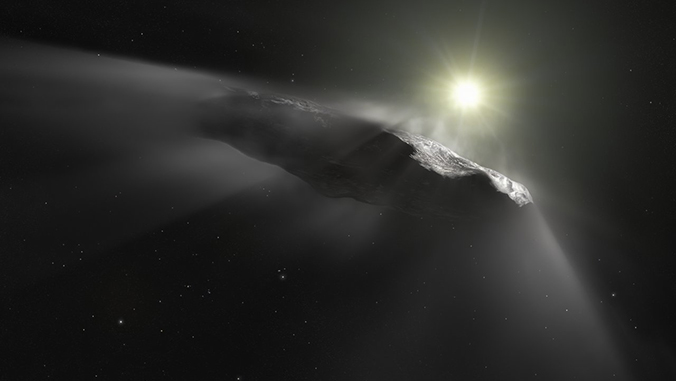
The interstellar object ʻOumuamua was discovered back on October 19, 2017, but the puzzle of its true nature has taken months to unravel, and may never be fully solved.
Meaning ‘scout from the distant past’ in Hawaiian, ʻOumuamua was found by astronomers working with the University of Hawaiʻi‘s Pan-STARRS1 survey as it came close to Earth’s orbit. But what is it—an asteroid, or a comet? As soon as it was spotted, astronomers from around the world were on the case.
The first clue: its trajectory. Extensive follow-up observations by the Canada-France-Hawaiʻi Telescope, the European Space Agency’s Optical Ground Station telescope in Tenerife, Canary Islands and other telescopes around the world have helped pin it down.
ʻOumuamua was first spotted about a month after its closest approach to the Sun, which took it within the orbit of Mercury. Unlike any asteroid or comet observed before, this new object sped past the Sun, approaching from ‘above’ the plane of the planets on a highly inclined orbit, moving fast enough (70,800 miles per hour as of July 1, 2018) to escape the Sun’s gravitational pull and eventually depart our Solar System.
Initially, astronomers assumed ʻOumuamua was a comet. Current understanding of planet formation predicts more interstellar comets than interstellar asteroids. However, astronomers did not see evidence of gas emission or a dusty environment in the observations. Without these hallmarks of cometary activity, it was classified as the first interstellar asteroid.
A team of astronomers led by Marco Micheli of ESA‘s SSA-NEO Coordination Centre, and Karen Meech of the UH Institute for Astronomy, continued to make high precision measurements of the object and its position.
The story has another surprising twist. Learn more at the Institute for Astronomy website.

